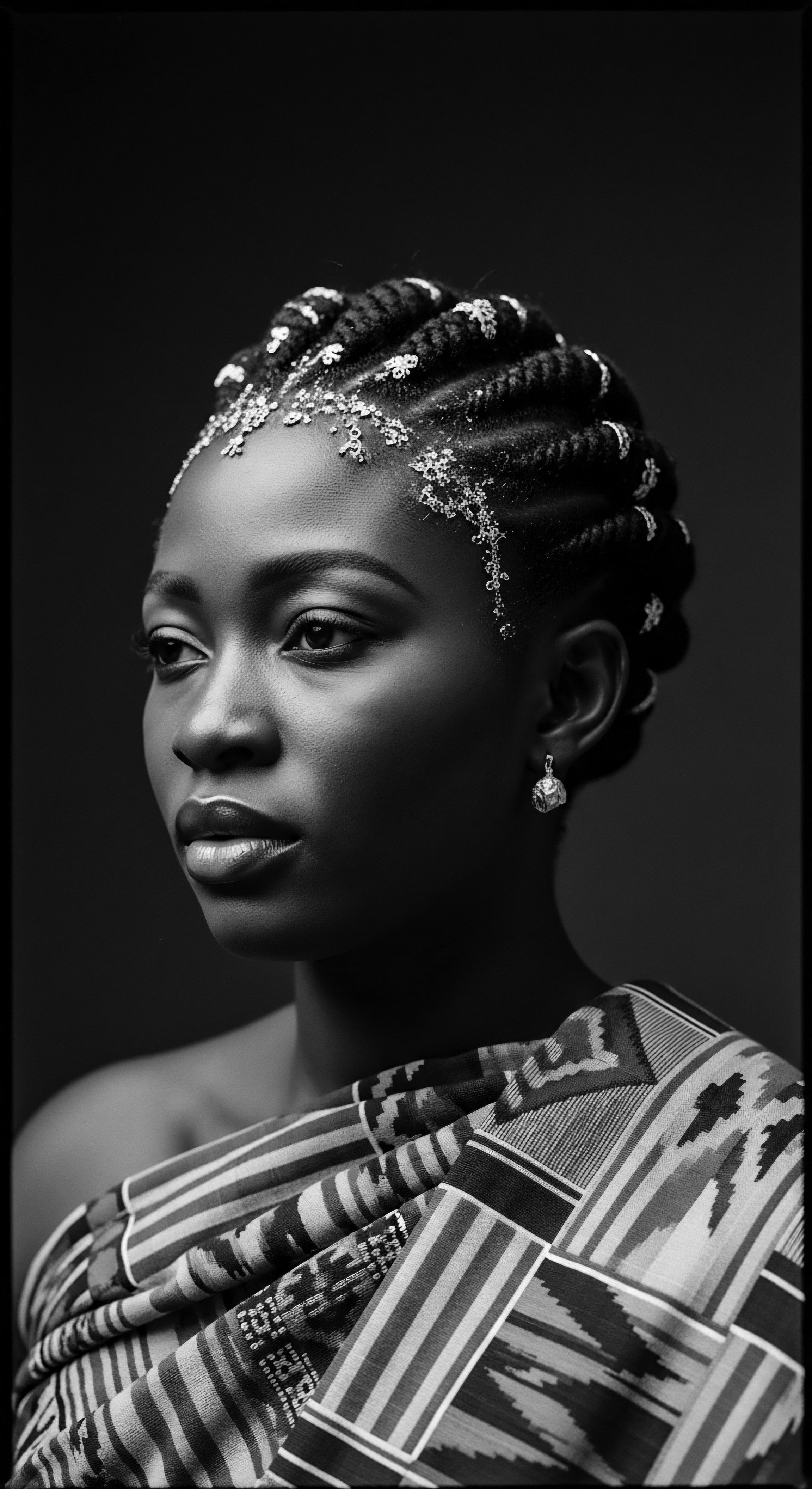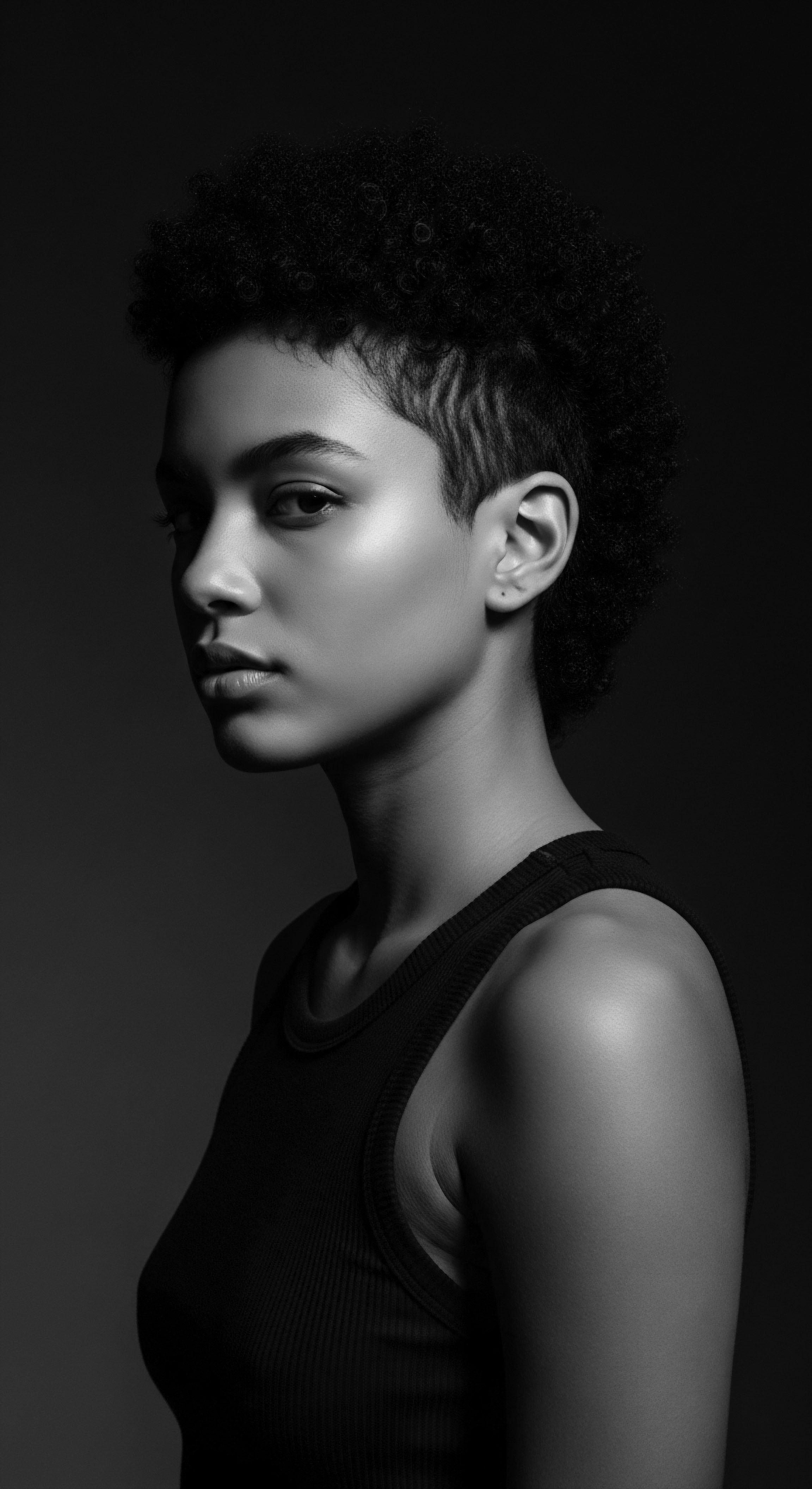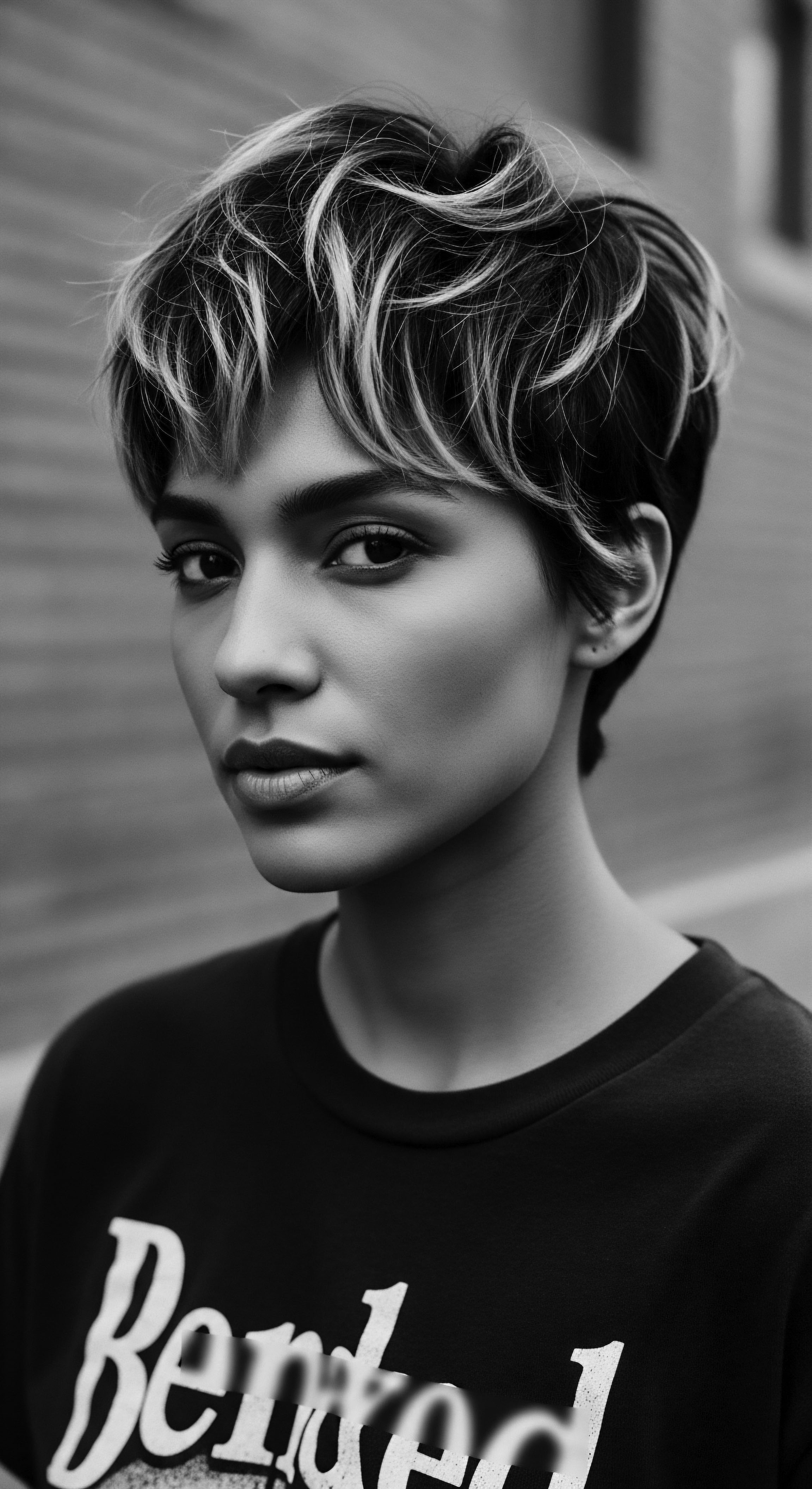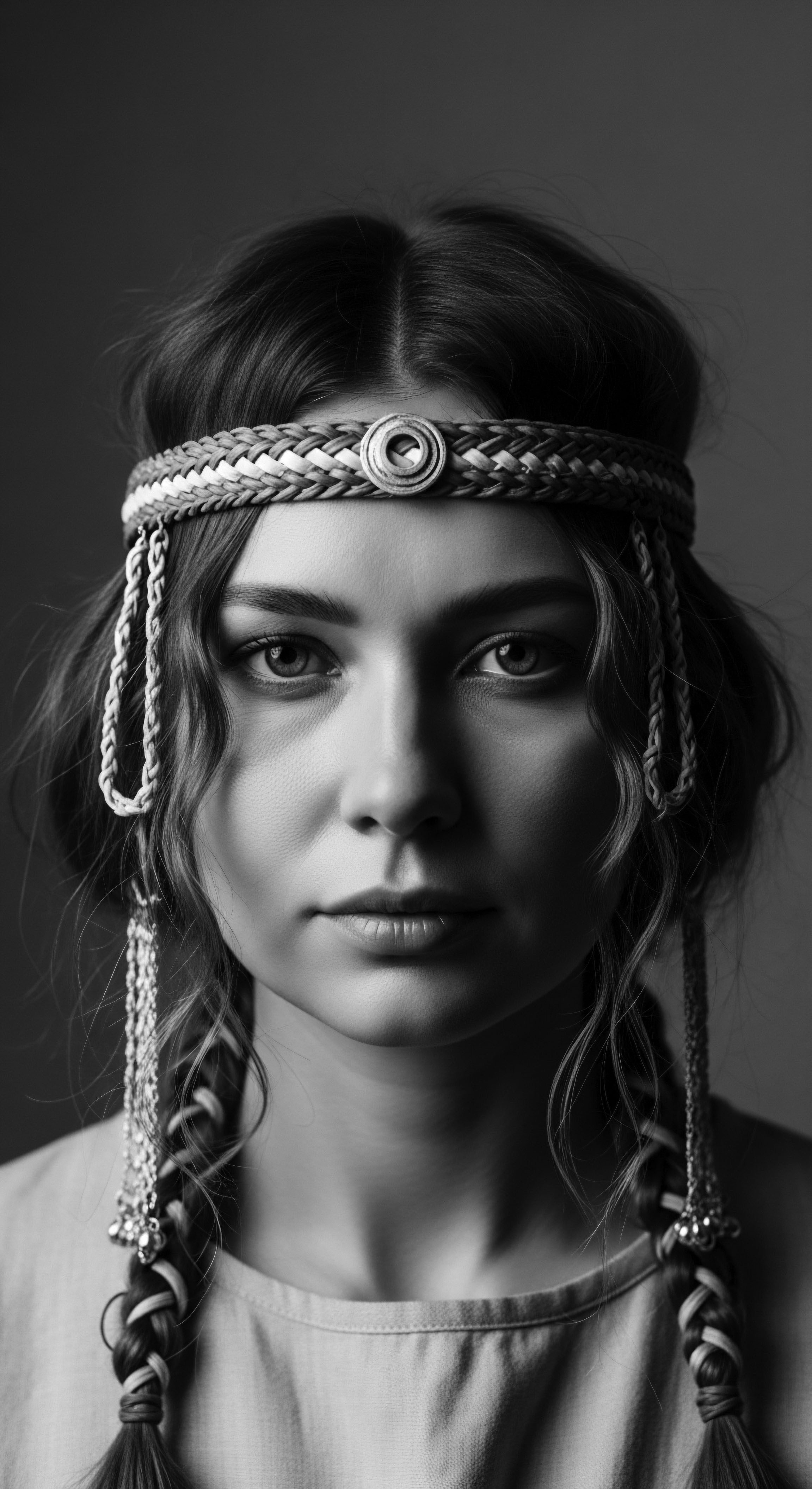
Roots
Across generations, from sun-drenched savannas to vibrant diaspora communities, the care of textured hair has never been a casual act. It stands as a profound testament to ancestral wisdom, a living echo of traditions passed down through whispers, touch, and shared knowledge. Our strands, with their intricate coils and waves, hold memory. They carry the stories of resilience, the beauty forged in ingenuity, and the deep understanding that has sustained our hair’s vitality for centuries.
Today, as we navigate a world brimming with innovation, the discerning spirit asks ❉ which of these ancient elixirs, these time-honored remedies, still speak to the very soul of a strand, holding sway in our contemporary rituals? The answer lies in revisiting the elemental biology of our hair, viewing it not through a sterile lens, but through the warm, guiding light of history and cultural significance.

The Intricate Architecture of Textured Hair
The unique helical structure of textured hair, often described as a series of tight curves and bends, presents both a challenge and a marvel. This morphology means moisture struggles to travel uniformly down the hair shaft, leading to a natural propensity for dryness compared to straight hair. It also creates points of vulnerability where the hair shaft bends, making it more susceptible to breakage. Ancestral communities understood these inherent characteristics with an intuitive grasp, even without microscopes or biochemical analysis.
Their practices were, at their core, brilliant empirical responses to these very realities. They sought ingredients that offered profound hydration, gentle strengthening, and protective coatings, drawing directly from the abundant natural pharmacies of their environments.
Our hair’s inherent structure, with its unique bends and coils, naturally sought the protective and moisturizing embrace of traditional ingredients, long before modern science articulated their benefits.
Consider the very anatomy ❉ the cuticle, the outer protective layer, is often more raised in textured hair types, further contributing to moisture loss. The cortex, the inner bulk of the hair, requires constant nourishment to maintain elasticity. Traditional ingredients were, in effect, performing tasks we now understand at a molecular level ❉ sealing the cuticle, delivering lipids to the cortex, and creating a barrier against environmental stressors. This innate wisdom, passed from mother to daughter, elder to youth, forms the bedrock of our present-day understanding of hair health.

Nomenclature and Ancestral Understandings
The language we use to describe textured hair today, with its classifications of 3A to 4C, is a relatively recent construct. Yet, throughout history, communities had their own nuanced terminologies, often rooted in sensory description or cultural context, reflecting a deep respect for the hair’s varied forms. For instance, in many West African cultures, hair was described in terms of its texture’s likeness to seeds, wool, or various plant fibers, each carrying its own specific care implications and aesthetic values. These descriptions, while not scientific in the modern sense, guided the selection and application of traditional ingredients.
The reverence for hair also shaped how ingredients were sourced and processed. The collection of certain plant oils, clays, or herbs often involved specific rituals or community efforts, imbuing these ingredients with a sacred quality. This practice reminds us that hair care was never just about superficial appearance; it was deeply interwoven with identity, spirituality, and communal ties.
- Shea Butter ❉ Known as ‘karité’ in many West African languages, it speaks to a legacy of nourishment.
- Coconut Oil ❉ A staple in coastal communities, its linguistic roots across various languages reflect its omnipresence.
- Chebe Powder ❉ An ancestral Chadian blend, its name directly links to its region of origin and the traditions it carries.

The Echoes of Ancient Growth Cycles
Hair growth, a ceaseless cycle of anagen, catagen, and telogen phases, has remained unchanged through millennia. What has varied, however, are the external factors influencing this cycle and the methods used to support it. In ancestral settings, diet, climate, and lifestyle all played a significant role. Traditional ingredients were often consumed internally as well as applied topically, reflecting a holistic view of wellness where internal health directly mirrored external vitality, including hair strength and growth.
For instance, diets rich in indigenous fruits, vegetables, and lean proteins provided the building blocks for keratin, the protein that constitutes hair. Certain traditional ingredients, when applied to the scalp, were understood to stimulate circulation or soothe irritation, creating an optimal environment for growth. This integrated approach, where care for the entire being supported the vibrancy of the hair, truly highlights the profound, interconnected wisdom of past generations.

Ritual
The practices surrounding textured hair care are far more than mere routines; they are rituals, steeped in cultural memory and practical ingenuity. They represent a continuity of care that stretches back through time, adapting and enduring. The question of which traditional ingredients retain their relevance today becomes particularly resonant when we examine their enduring presence within these cherished styling techniques and transformations. These are not just artifacts of the past; they are living elements, their efficacy validated by generations of application and increasingly, by contemporary scientific inquiry.

The Ancestral Roots of Protective Styling
Protective styles—braids, twists, cornrows, and various forms of intricate coiling—have always been the cornerstone of textured hair maintenance across African cultures and the diaspora. These styles shield fragile ends from environmental damage and manipulation, promoting length retention. The ingredients used alongside these styles were chosen for their ability to lubricate, moisturize, and strengthen the hair while it was tucked away.
Traditional protective styles, a timeless heritage, found their efficacy greatly enhanced by ingredients that shielded and nourished the hair from within.
A powerful example lies in the use of shea butter (Vitellaria paradoxa). Originating from the shea tree in West Africa, its historical use spans millennia. Communities across Mali, Burkina Faso, Ghana, and Nigeria have long harvested and processed shea nuts into the rich, emollient butter. This ingredient was not only a primary moisturizer for skin and hair but also an integral part of ceremonial hair styling and daily protective practices.
Women would meticulously apply shea butter to hair before braiding or twisting, providing a natural sealant against dryness and promoting suppleness. Byrd and Tharps (2001, p. 25) describe its widespread use, underscoring its long-standing cultural and practical significance in African hair traditions, moving beyond a simple cosmetic application to a profound aspect of daily life and identity. Its dense fatty acid profile—oleic, stearic, linoleic acids—alongside vitamins A and E, provides deep conditioning and acts as a natural barrier, properties that modern science now confirms as beneficial for high-porosity, coily textures. This ancestral wisdom, validated by contemporary understanding of lipid chemistry, makes shea butter an undeniable staple in current textured hair care.

How Do Traditional Ingredients Enhance Natural Definition?
Natural styling, celebrating the innate coil and curl patterns, relies on ingredients that enhance definition without causing stiffness or flaking. Many traditional ingredients perform this delicate balancing act beautifully. Aloe vera , for instance, prevalent in various parts of Africa and the Caribbean, has been used for centuries for its soothing and moisturizing properties.
Its mucilaginous gel, rich in polysaccharides, provides a light hold and exceptional hydration, making coils clump and appear more defined. Similarly, the mucilage from certain indigenous plants, like okra in parts of the Americas or flaxseed in other regions, was extracted to create natural gels, offering gentle definition without residue.
The tactile experience of these ingredients, often involving direct interaction with the plant itself, connected individuals more intimately with nature’s bounty. This hands-on preparation, a legacy of resourcefulness, meant care was a collaborative effort, a communal learning.
| Ingredient Shea Butter |
| Ancestral Application and Cultural Context Used extensively in West African cultures for centuries as a sealant, moisturizer, and protective balm before styling; integrated into ceremonial practices. |
| Modern Relevance in Textured Hair Care Primary emollient and sealant for locking in moisture, reducing breakage, and adding shine; often found in leave-ins, butters, and stylers. |
| Ingredient Coconut Oil |
| Ancestral Application and Cultural Context A staple in coastal African and Caribbean communities for pre-poo treatments, deep conditioning, and scalp health; revered for its softening properties. |
| Modern Relevance in Textured Hair Care Penetrates the hair shaft to reduce protein loss, provides lubrication, and enhances softness; common in deep conditioners, hot oil treatments. |
| Ingredient Aloe Vera |
| Ancestral Application and Cultural Context Applied directly from the plant in many regions for scalp soothing, hydration, and gentle styling; valued for its healing attributes. |
| Modern Relevance in Textured Hair Care Humectant for drawing moisture, light hold for curl definition, and scalp calming agent; present in gels, custards, and scalp treatments. |
| Ingredient Black Soap (Alata Samina) |
| Ancestral Application and Cultural Context Traditional West African cleansing agent for skin and hair, made from plantain skins, cocoa pods, and palm oil; respected for its purity. |
| Modern Relevance in Textured Hair Care Effective, gentle cleanser for textured hair, removing buildup without stripping natural oils; often used as a clarifying shampoo. |
| Ingredient These ingredients carry forward generations of wisdom, proving their lasting utility across time. |

Traditional Tools and Their Ingredient Connections
The tools used in traditional hair care were often as elemental as the ingredients themselves. Wide-tooth combs carved from wood or bone, simple brushes made from natural fibers, and even the skilled fingers of a community elder were the primary instruments. These tools worked in concert with the ingredients.
A wooden comb, for instance, would distribute oils and butters more gently through dense hair, preventing breakage. The application of warmed oils with skilled hands during a scalp massage was both a therapeutic act and a method of ensuring even distribution of nutrients.
Understanding these historical tool-and-ingredient pairings helps us appreciate the holistic nature of ancestral care. The tools were designed to complement the unique properties of the traditional ingredients, maximizing their benefits for textured strands. This synergy speaks to a profound practical knowledge that remains relevant in our choice of tools and products today.

Relay
The journey of traditional ingredients from ancient earth to modern formulations represents a powerful relay of knowledge, a testament to enduring efficacy and cultural memory. In this contemporary landscape of textured hair care, these ancestral components do not merely exist; they actively contribute to scientific understanding, informing innovations that honor their origins. The continued relevance of these ingredients speaks to a profound interplay between empirical wisdom and validated science, creating a rich dialogue across generations.

What Scientific Understandings Support Ancient Practices?
Many traditional ingredients, long celebrated for their anecdotal benefits, are now subject to rigorous scientific scrutiny, revealing the molecular mechanisms behind their ancestral acclaim. Take coconut oil , for instance, a historical staple in many African and Caribbean communities. For centuries, it was used as a pre-shampoo treatment, a deep conditioner, and a scalp balm. Modern research, such as that by Rele and Mohile (2003), has demonstrated that coconut oil, thanks to its high concentration of lauric acid, has a unique ability to penetrate the hair shaft, reducing protein loss during washing.
This scientific validation underscores the genius of ancient practices, confirming that what was observed experientially for generations now holds up under a microscope. It is a powerful affirmation that the wisdom of our ancestors was not merely superstitious belief but astute observation and effective application.
The presence of natural humectants in ingredients like honey and agave nectar , which draw moisture from the air into the hair, aligns perfectly with the hydration needs of textured hair. Ancestral communities likely observed the softening and moisturizing effects of these ingredients, incorporating them into their care rituals without needing to understand the underlying principle of osmosis or hygroscopy. Their relevance today is rooted in this validated hydrating capacity.

Traditional Ingredients and Hair Resilience Today
Textured hair, by its very nature, demands a specific kind of care to maintain its resilience against environmental stressors and styling manipulation. Traditional ingredients often provide multifaceted benefits that directly contribute to this robustness. Ingredients rich in antioxidants, like hibiscus or amla (though more common in South Asian hair traditions, their principles of botanical conditioning resonate), guard against oxidative damage, preserving the integrity of the hair structure. Ingredients with anti-inflammatory properties, such as tea tree oil (used with discretion), help maintain a healthy scalp, which is the foundation for strong hair growth.
The continued use of ingredients such as Rhassoul clay , originating from the Atlas Mountains of Morocco, exemplifies this enduring relevance. Historically employed for cleansing and conditioning, its unique mineral composition allows it to absorb impurities from the scalp and hair without stripping essential oils, leaving hair soft and detangled. This gentle yet effective cleansing property makes it highly valued in modern natural hair regimens seeking alternatives to harsh sulfates.
- Rhassoul Clay ❉ Cleanses and conditions without stripping, revered for its mineral content.
- Honey ❉ A natural humectant, it draws and holds moisture within the hair shaft, imparting softness.
- Avocado Oil ❉ Rich in fatty acids and vitamins, it provides deep nourishment and helps seal the cuticle.

How Do Traditional Ingredients Inform Modern Formulations?
The contemporary hair care market is increasingly looking to ancestral wisdom for inspiration. Cosmetic chemists and formulators are actively studying traditional ingredients, isolating their beneficial compounds, and incorporating them into sophisticated modern products. This ensures that the legacy of heritage continues to shape the future of hair care. It represents a respectful acknowledgement of a knowledge base that predates laboratories and scientific patents.
For instance, the use of baobab oil , extracted from the seeds of the majestic African baobab tree, is gaining prominence. Historically, it was used for its moisturizing properties and ability to strengthen hair. Modern analysis reveals its wealth of omega fatty acids, which contribute to hair elasticity and shine, explaining its traditional efficacy.
Similarly, the rediscovery of traditional African black soap, made from the ashes of plantain peels, cocoa pods, and palm kernel oil, offers a clarifying yet gentle cleansing experience, honoring an ancestral preparation method while fitting seamlessly into contemporary routines. This trend demonstrates a beautiful synergy ❉ ancestral ingredients providing the blueprint, and modern science offering validation and optimized delivery.
| Traditional Ingredient Plantain Peel Ash (in Black Soap) |
| Chemical Components of Relevance Potassium carbonate |
| Scientific Action/Benefit for Textured Hair Mild alkalinity creates saponification, acting as a gentle cleanser that breaks down oils and dirt without harsh stripping. |
| Traditional Ingredient Hibiscus Rosa-Sinensis (Flower) |
| Chemical Components of Relevance Mucilage, amino acids, antioxidants (e.g. anthocyanins) |
| Scientific Action/Benefit for Textured Hair Conditions hair, detangles, provides a slippery feel for easier manipulation, and offers antioxidant protection. |
| Traditional Ingredient Baobab Oil |
| Chemical Components of Relevance Omega-3, -6, -9 fatty acids; vitamins A, D, E, F |
| Scientific Action/Benefit for Textured Hair Deeply moisturizes, improves hair elasticity, provides a protective barrier, and adds luster. |
| Traditional Ingredient Moringa Oleifera (Leaf/Seed Oil) |
| Chemical Components of Relevance Vitamins A, B, C, E; minerals (zinc, iron); amino acids |
| Scientific Action/Benefit for Textured Hair Nourishes scalp, strengthens hair, provides antioxidant benefits, and supports healthy growth. |
| Traditional Ingredient The rich biochemical profiles of these ancestral ingredients continue to offer valuable solutions for textured hair. |

Reflection
The journey through the enduring relevance of traditional ingredients in textured hair care is more than an academic exercise; it is a profound meditation on the resilience of heritage. Each oil, butter, herb, and clay carries with it the spirit of those who first discovered its gifts, who meticulously prepared it, and who shared its benefits across countless generations. Our textured strands are not merely biological filaments; they are living archives, imbued with the wisdom of the past, connecting us to a lineage of care, creativity, and self-expression.
The continuity we observe, from the ancient practices rooted in communal care to the sophisticated formulations of today, underscores a fundamental truth ❉ the “Soul of a Strand” is inextinguishable. It speaks of an innate human ingenuity that, regardless of technological advancement, returns to the earth’s timeless offerings for genuine nourishment and protection. As we continue to honor and explore these ancestral components, we not only preserve a rich cultural legacy but also rediscover pathways to holistic wellness that resonate deeply within our very being. The future of textured hair care, it seems, rests firmly on the shoulders of its magnificent past, a vibrant, ever-unfolding story of inherited beauty.

References
- Byrd, Ayana, and Lori Tharps. Hair Story ❉ Untangling the Roots of Black Hair in America. St. Martin’s Press, 2001.
- Rele, Jayashree S. and R. B. Mohile. “Effect of Mineral Oil, Sunflower Oil, and Coconut Oil on Prevention of Hair Damage.” Journal of Cosmetic Science, vol. 54, no. 2, 2003, pp. 175-192.
- Akihisa, Toshihiro, et al. “Shea Butter ❉ A Review of the Extraction Methods and Properties of Its By-Products.” Journal of Oleo Science, vol. 59, no. 2, 2010, pp. 91-99.
- Karanja, Regina G. et al. “Ethnobotanical Survey of Medicinal Plants Used in Hair Care in Kenya.” Journal of Applied Pharmaceutical Science, vol. 8, no. 1, 2018, pp. 119-126.
- Omobuwajo, Sandra. “African Indigenous Plants as Sources of Active Components for Cosmetic and Dermatological Products.” African Journal of Biotechnology, vol. 17, no. 10, 2018, pp. 317-325.
- Tarlo, Emma (Editor). Black Hair ❉ Art, Culture, History. Bloomsbury Academic, 2019.
- Ntogae, B. and S. S. Mbebeta. “Traditional Knowledge and Practices in African Hair Care ❉ A Review of Botanical Ingredients.” African Journal of Traditional, Complementary and Alternative Medicines, vol. 14, no. 3, 2017, pp. 12-21.
- Oyelade, O. J. “Composition and functional properties of baobab (Adansonia digitata) seed and pulp.” Journal of Food Chemistry, vol. 99, no. 3, 2006, pp. 493-496.
